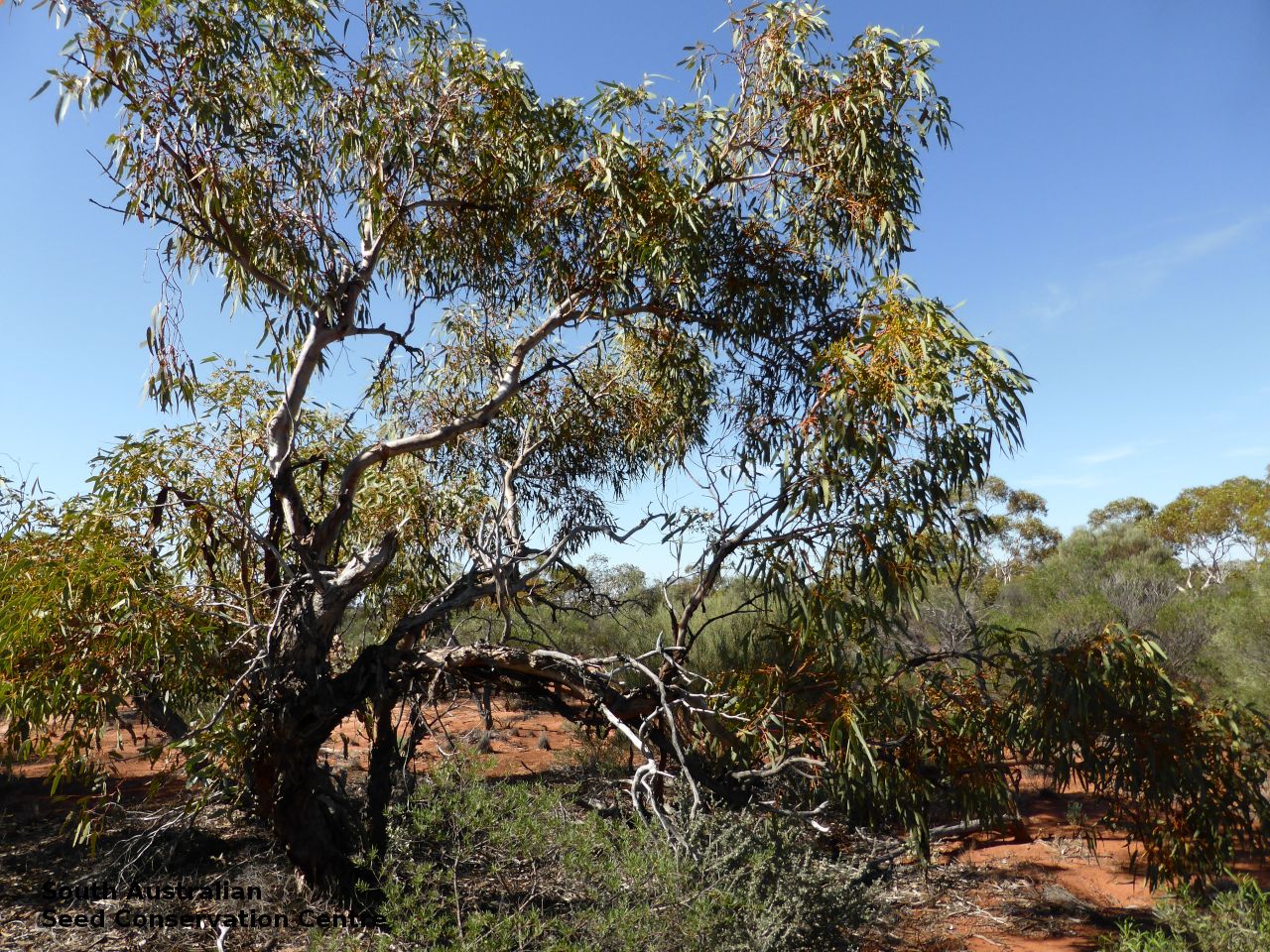
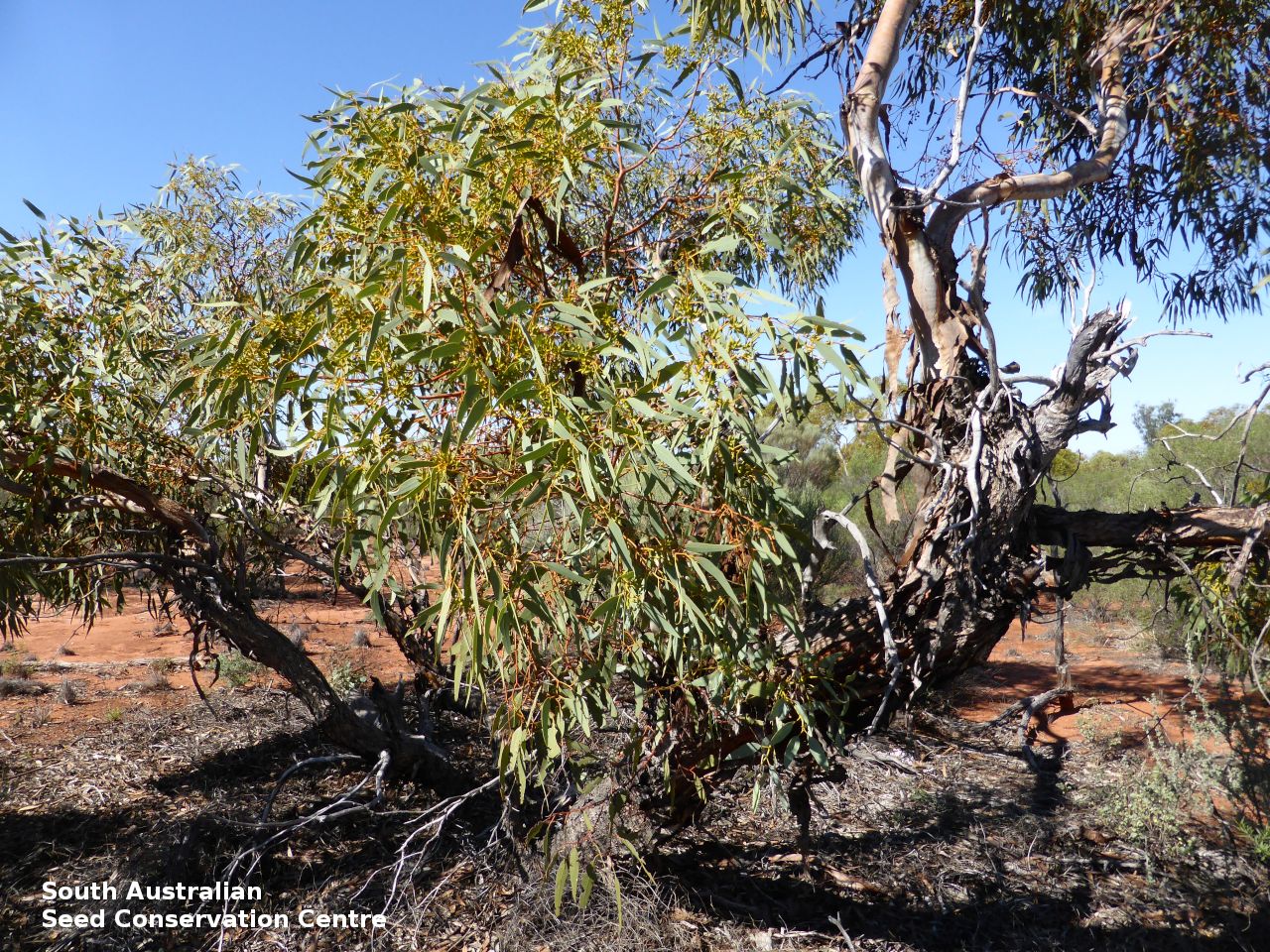
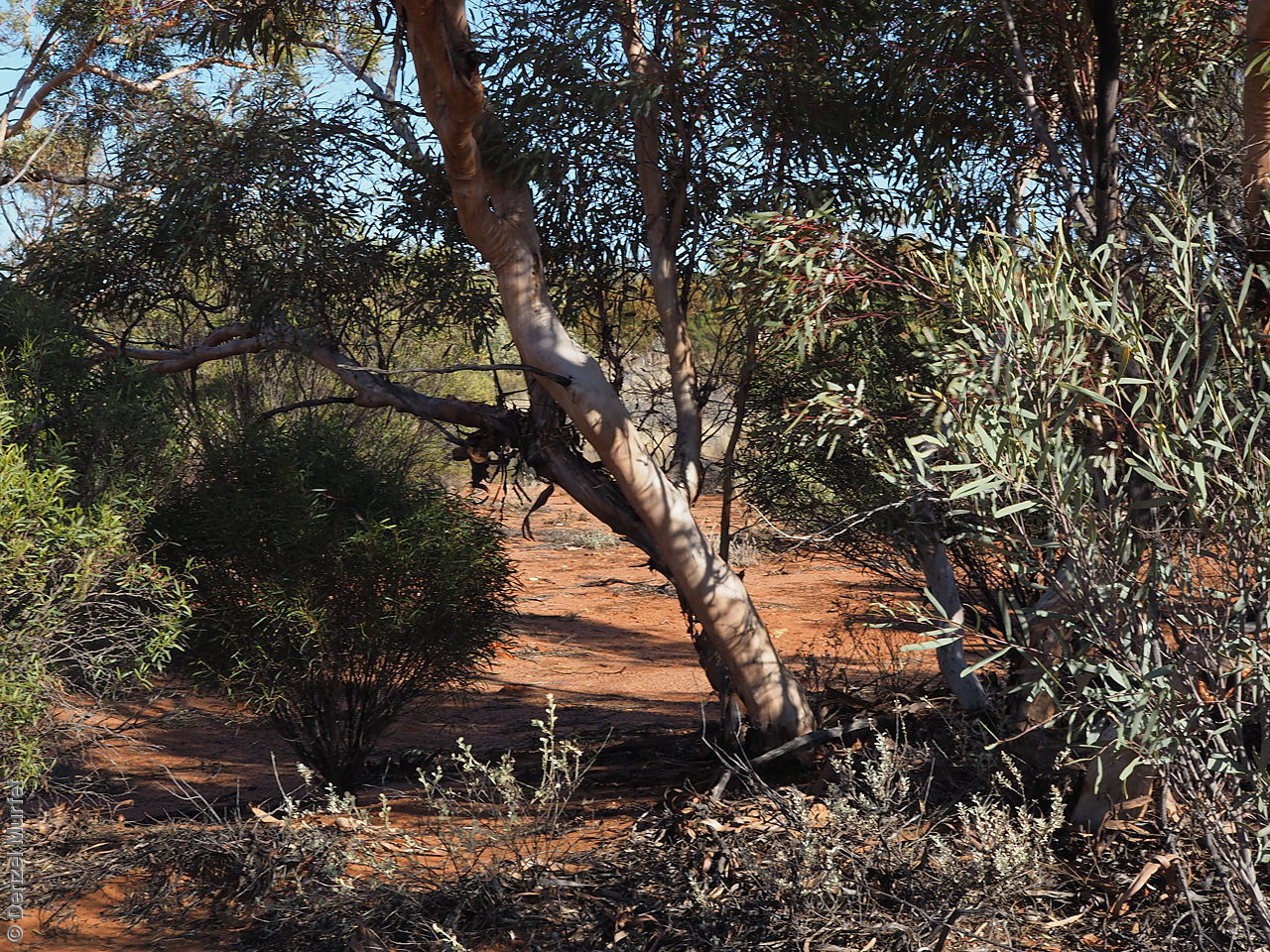
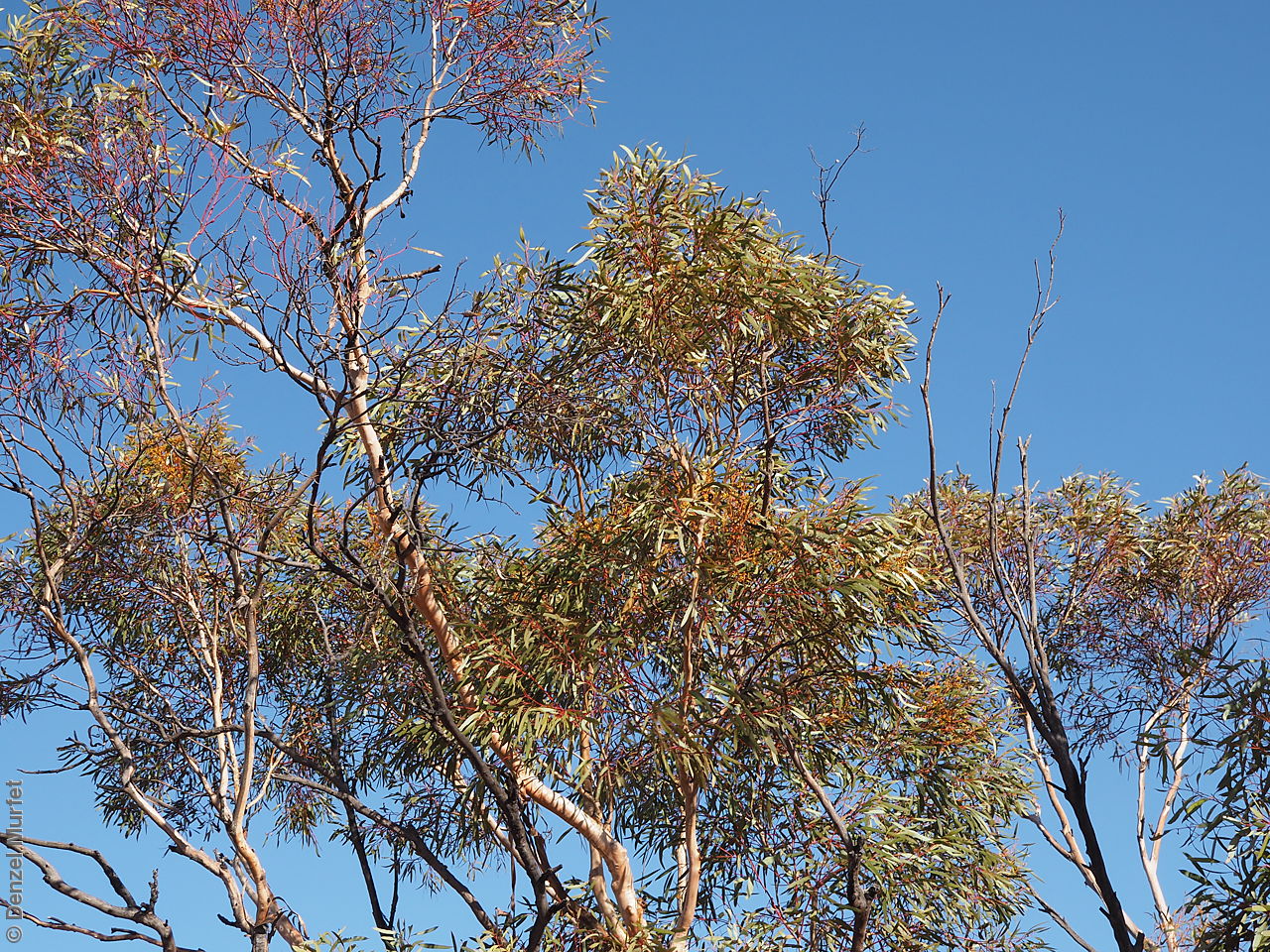

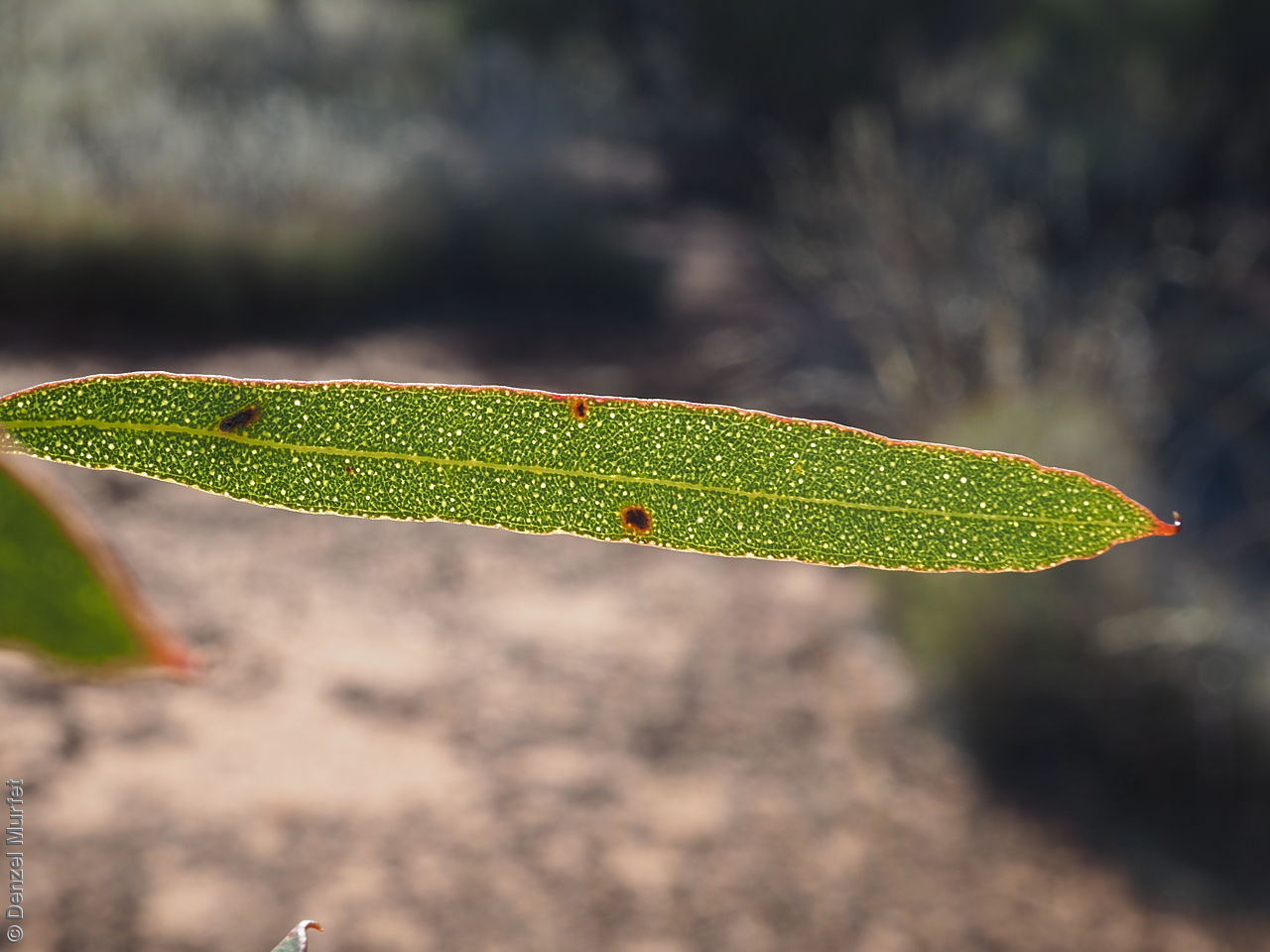
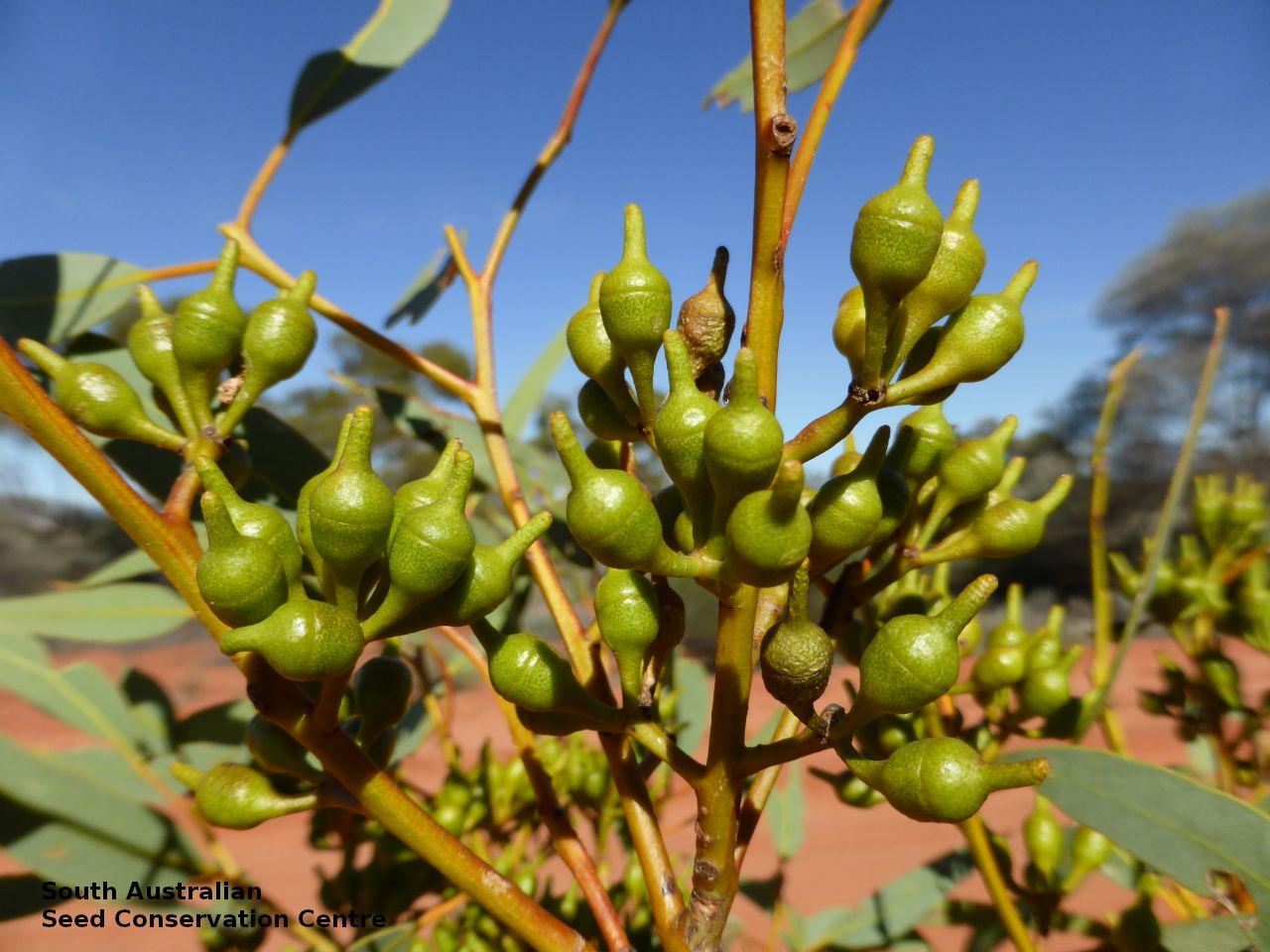
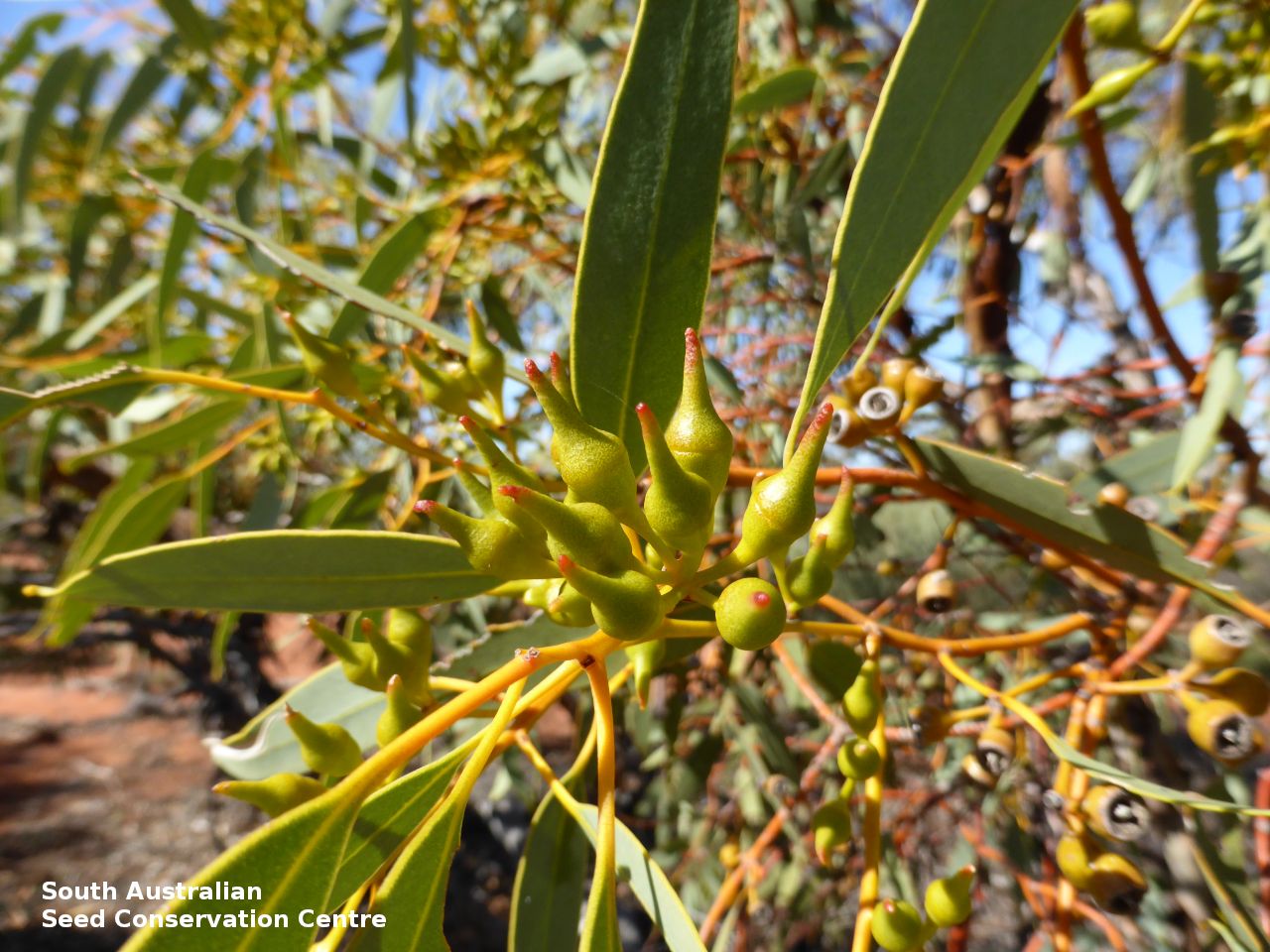
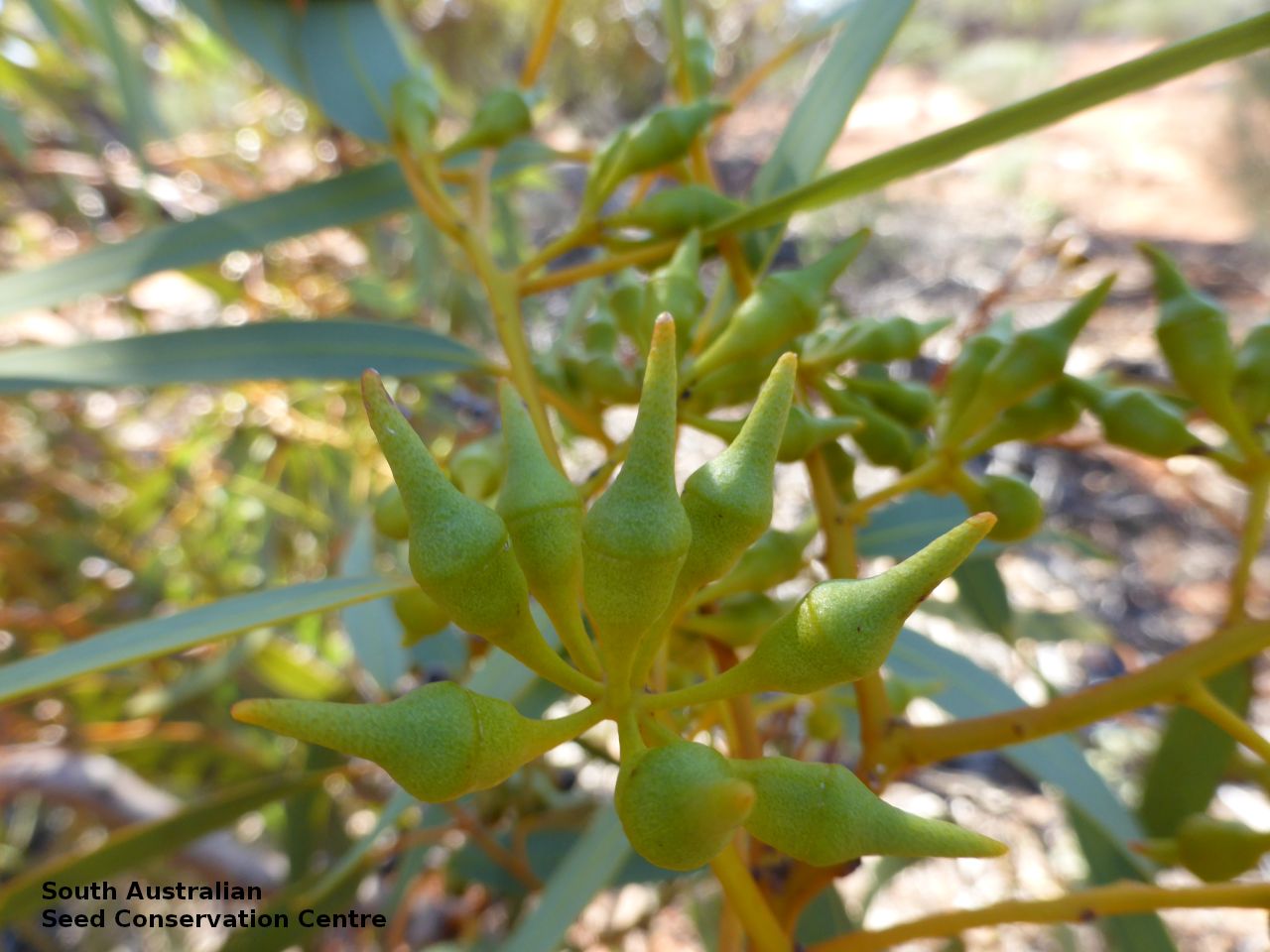
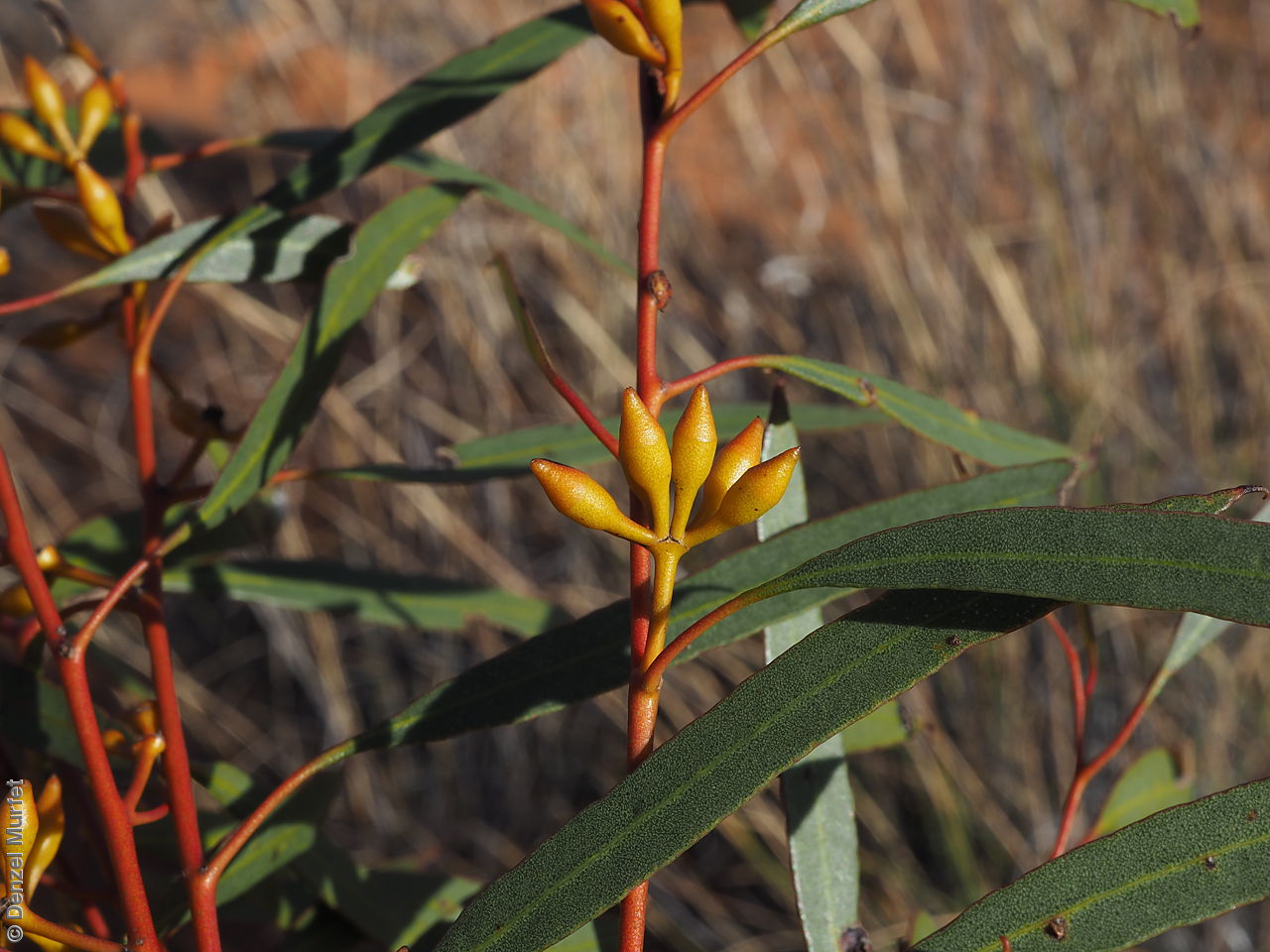
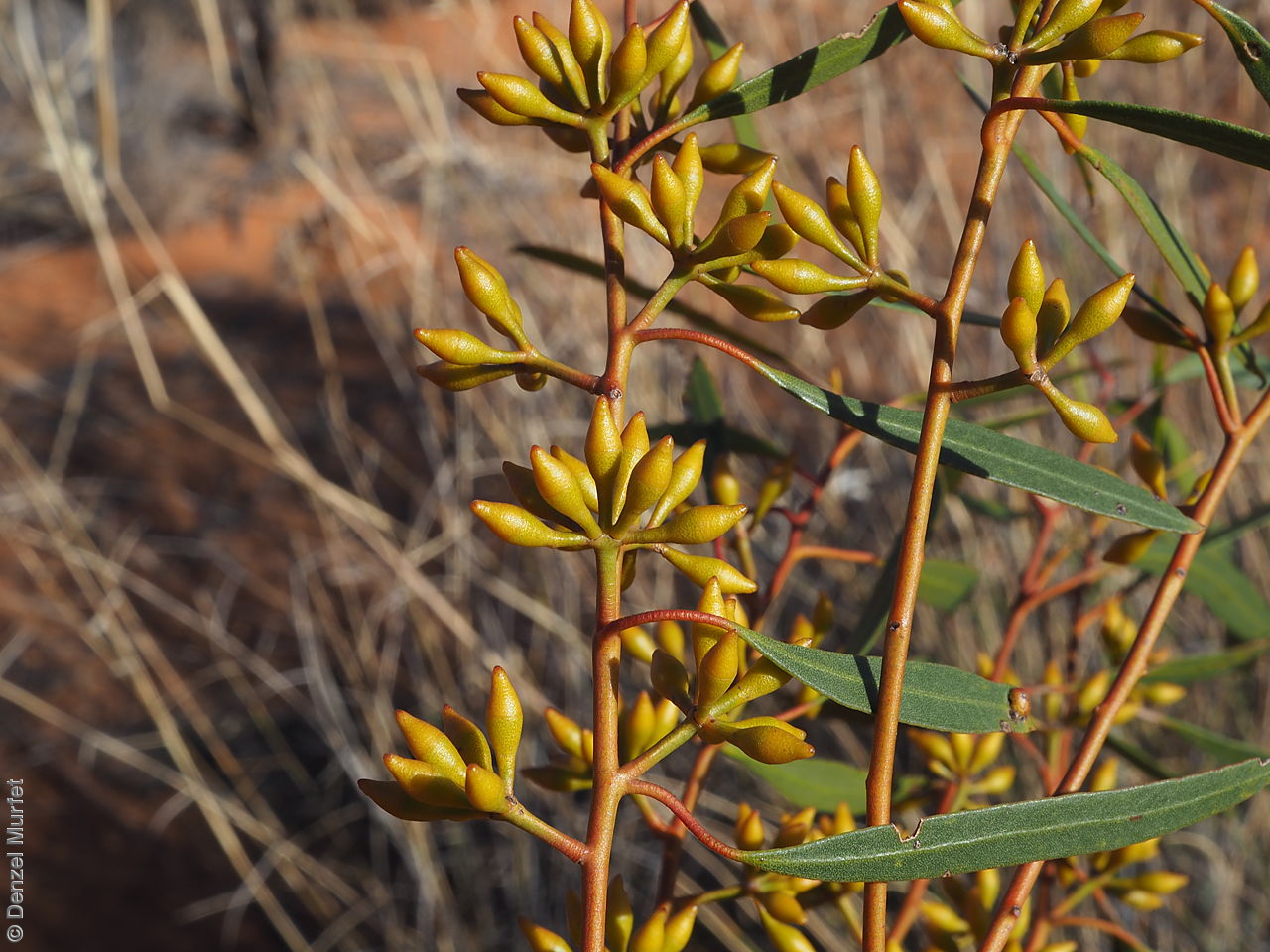
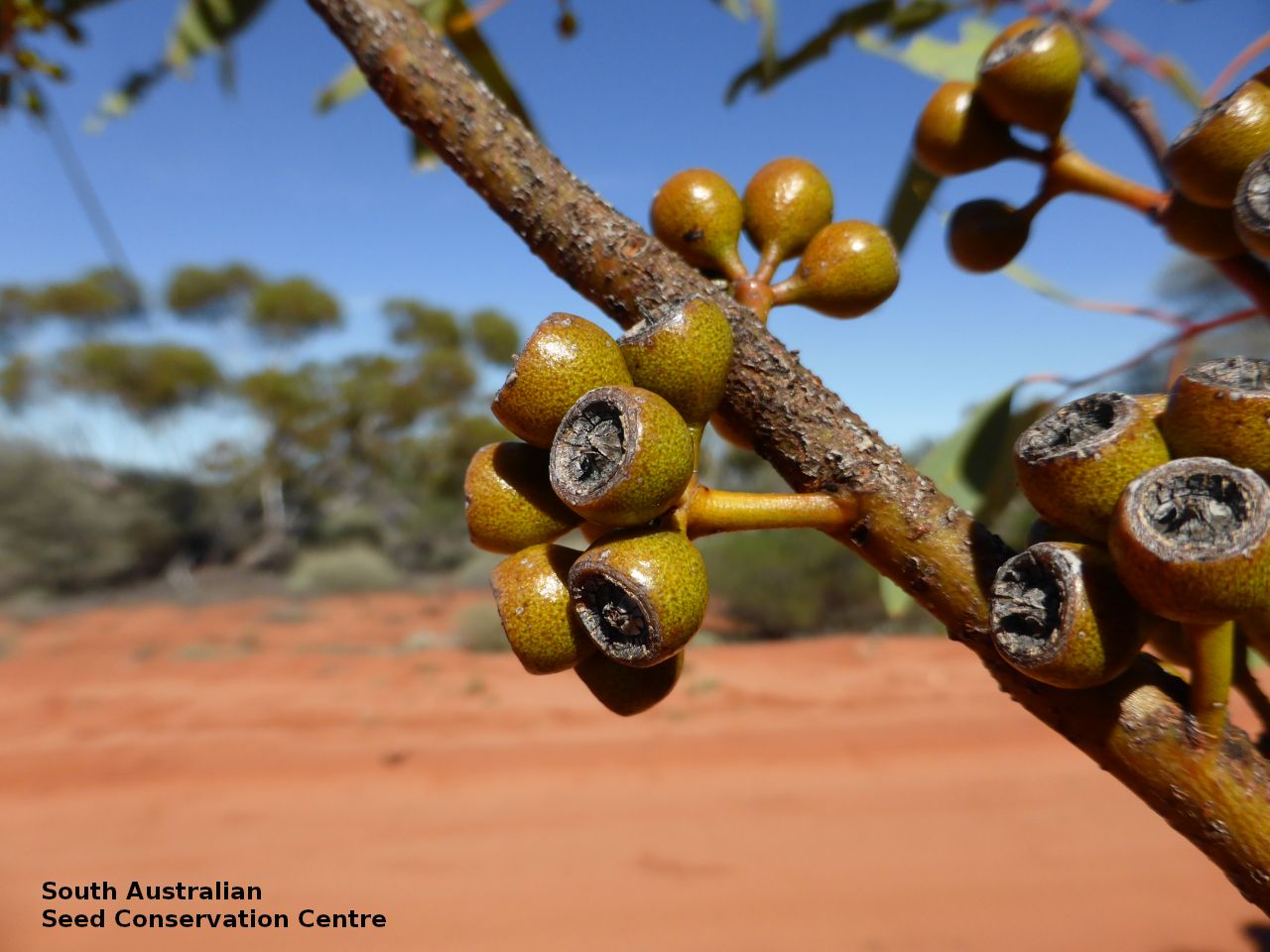
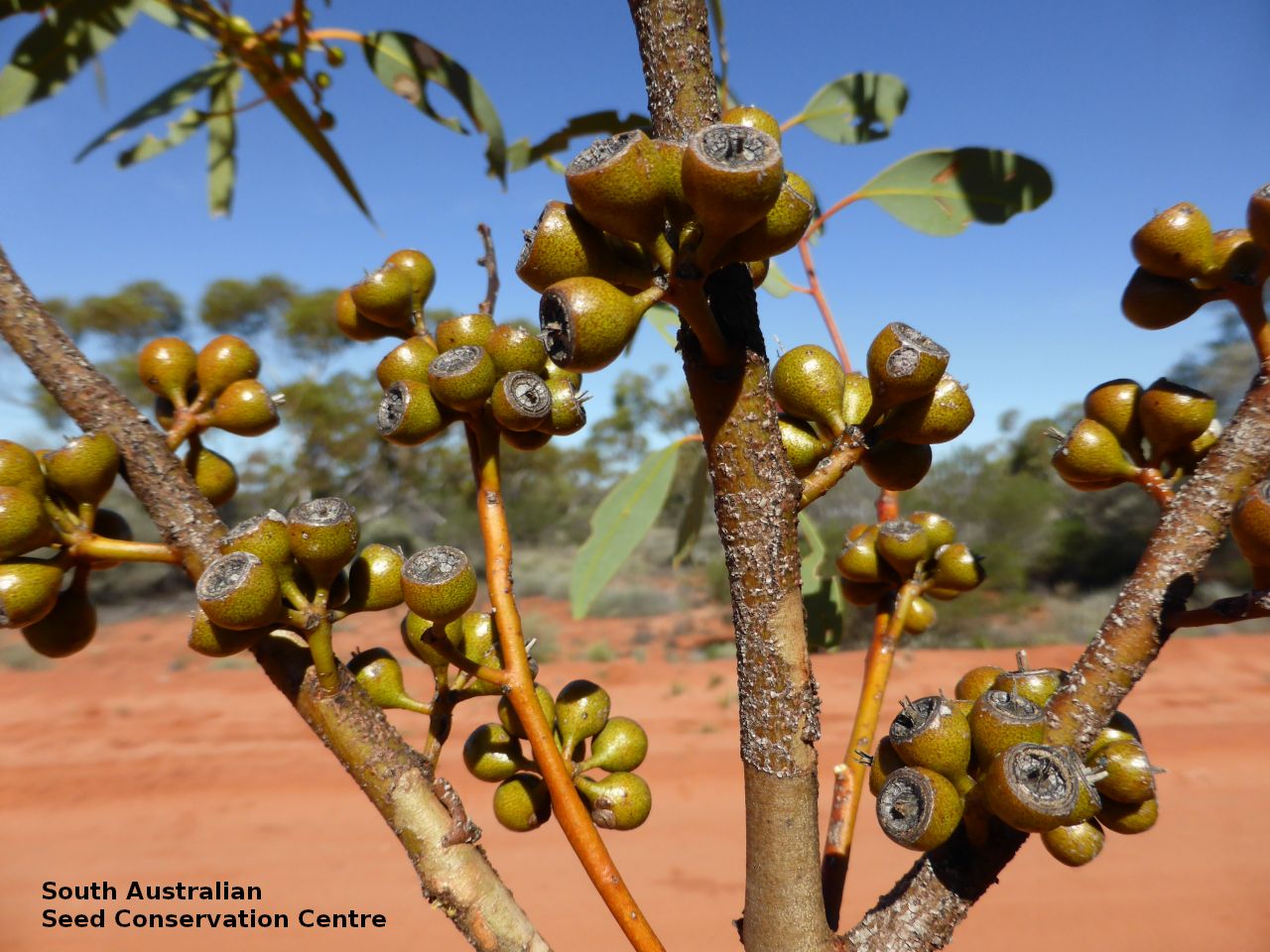
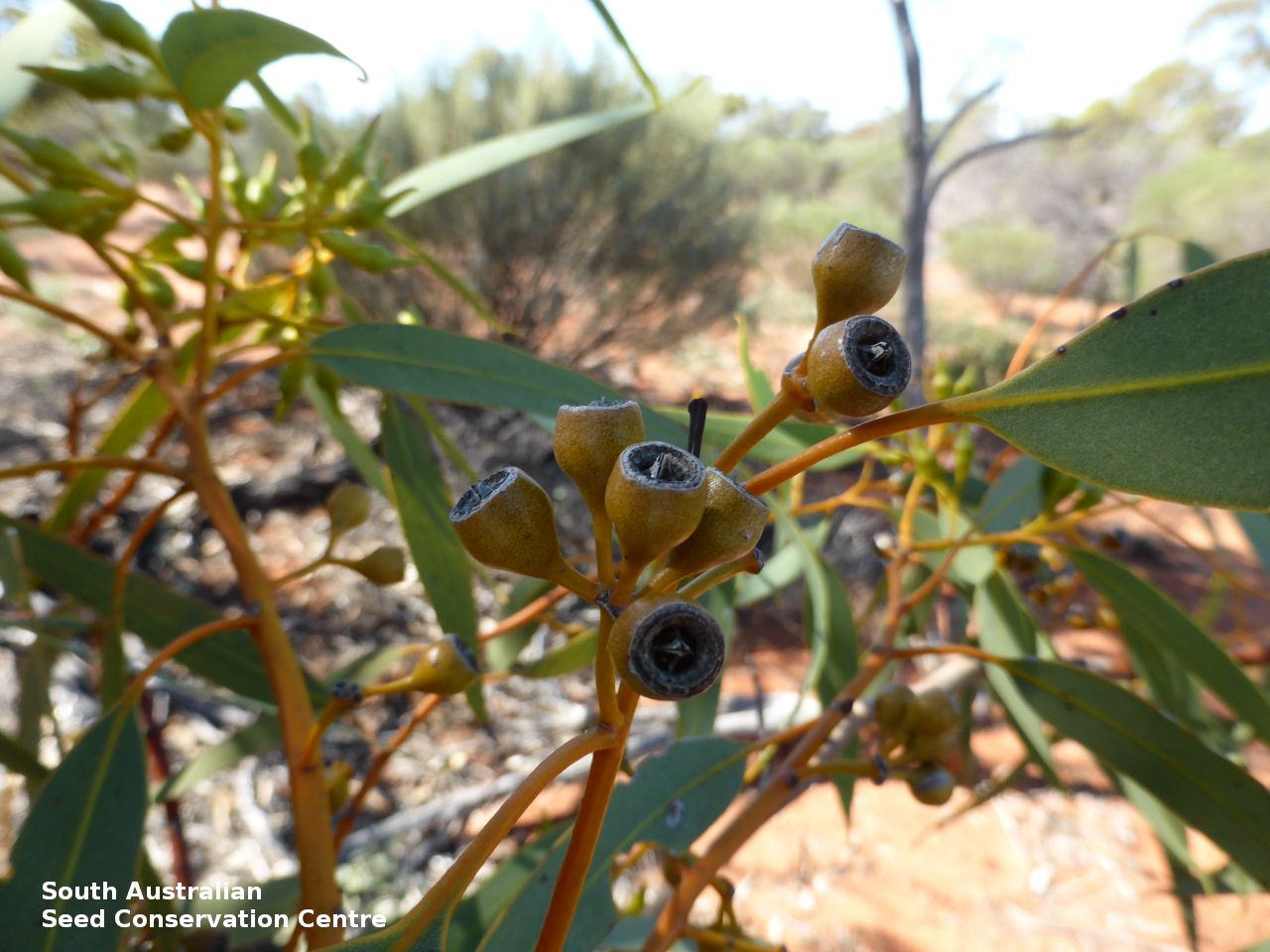
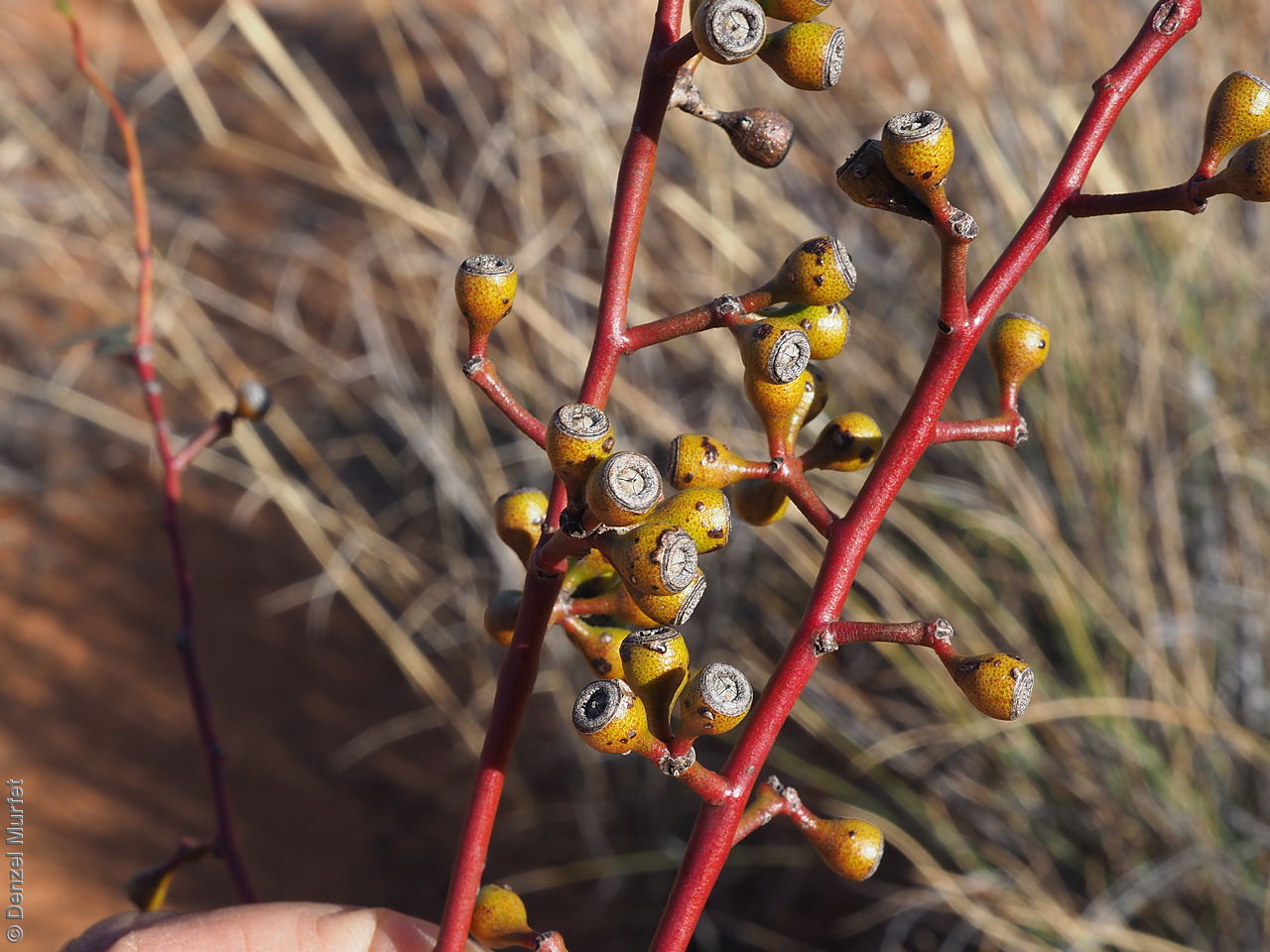
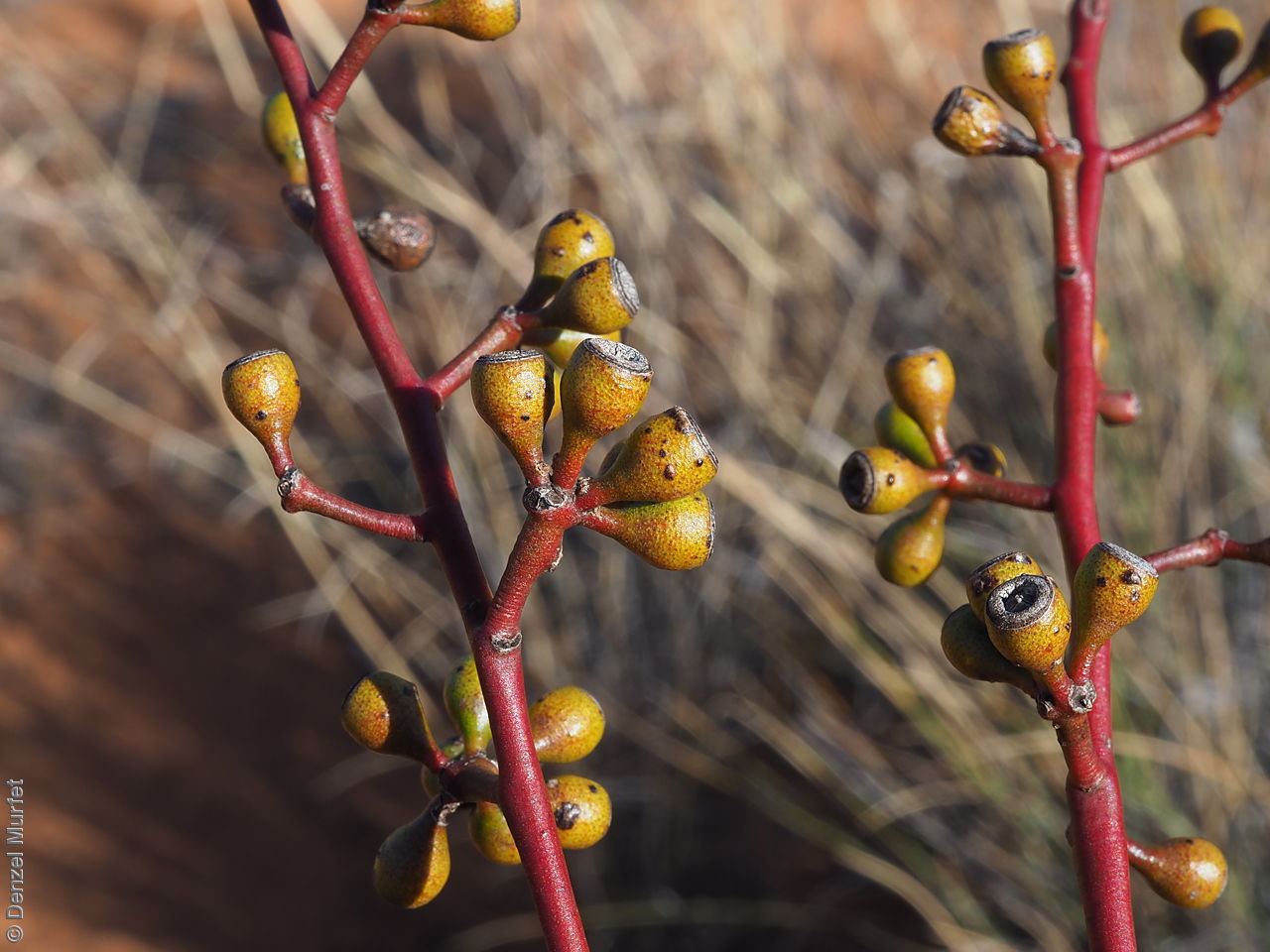
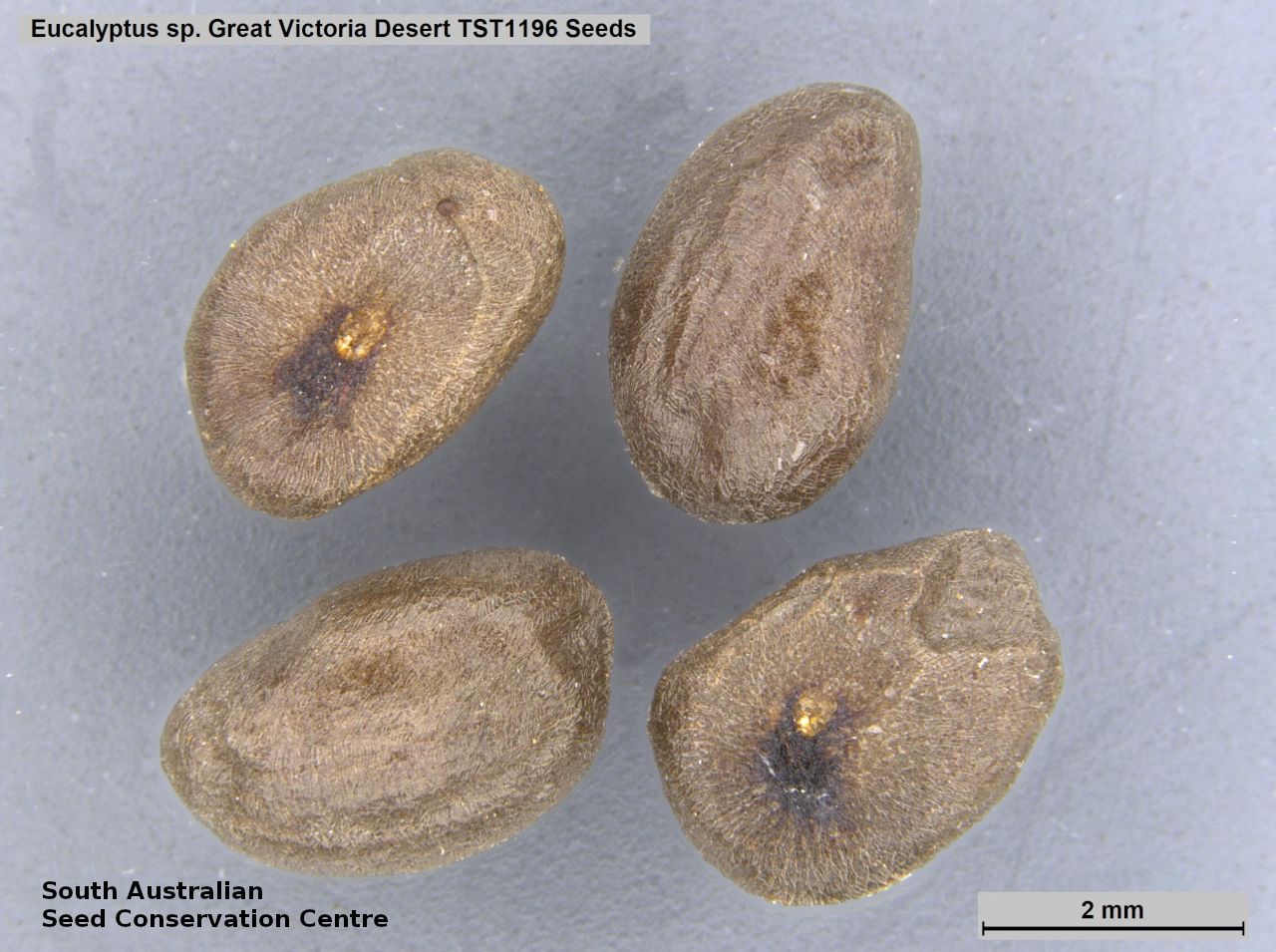


Prior names
Eucalyptus sp. Great Victoria Desert
Eucalyptus sp. Great Victoria Desert (D.Nicolle 3877), (p.p. max.), partly
Eucalyptus foecunda, partly
Common names
GVD Narrow-leaf Red Mallee
Narrow-leaf Red Mallee
Etymology
Eucalyptus from the Greek 'eu' meaning well and 'calyptos' meaning covered, alluding to the cap or lid which covers the stamens in the bud. Omissa meaning neglected or overlooked.
Distribution and status
Found in the northern Eyre Peninsula across to the Great Victoria Desert in South Australia, growing on red to pale yellow sands in mallee shrubland vegetation. Also found in Western Australia. Native. Uncommon in South Australia. Uncommon in Western Australia.
Herbarium regions: North Western, Nullarbor, Gairdner-Torrens, Eyre Peninsula
AVH map: SA distribution map (external link)
Plant description
Multi-trunked mallee to 6 m tall with loose rough bark at the base and smooth coppery to cream bark above and a mix of juvenile and adult leaves in the crown. Juvenile leaves ovate to orbicular, pruinose, bluish. Adult leaves to 90 mm long and 12 mm wide, narrow lanceolate to linear, glossy green. Inflorescences axillary in groups of 7-13 white flowers. Buds to 7 mm long and 5 mm wide; bud cup conical equal in length to the base. Similar to Eucalyptus leptophylla which has smooth bark, less waxy juvenile leaves and has only adult leaves in the mature crown. Fruits are cup-shaped to barrel-shaped fruit to 6 mm long and 96 mm wide; disc descending, valves 3-4 below rim. Seeds are grey-brown ovoid seed to 4 mm long and 2 mm wide, with fine wrinkled surface. Seed embryo type is folded.
Seed collection and propagation
Collect seeds between January and December. Collect mature fruits that are dark and hard (difficult to break with a finger nail), with the valves un-open any time of year. Leave the fruits in a breathable container in a dry room for one to two weeks. This allows the valves on the fruit to open and release the seeds. Separate the seeds by placing all the materials into a bucket and shaking it to dislodge the seeds. Pass the material through a sieve to separate the unwanted material. The finer material will contain both seeds (soft) and frass (hard) usually distinguishable from each other but can be very similar in shape and colour. With finer sieves, the seeds can be separated from the frass but this is not essential for storage or propagation. Store the seeds with a desiccant such as dried silica beads or dry rice, in an air tight container in a cool and dry place. From one collection, the seed viability was average, at 63%. Seeds are non-dormant, viable seed should germinate readily.
| Location | No. of seeds (weight grams) | Number of plants | Date collected | Collection number Collection location | Date stored | % Viability | Storage temperature |
|---|---|---|---|---|---|---|---|
| BGA MSB | 4,300 (5.71 g) 4,300 (5.71 g) | 15 | 15-May-2014 | TST1196 North Western | 24-Mar-2015 | 90% | -18°C |
Number of plants: This is the number of plants from which the seeds were collected.
Collection location: The Herbarium of South Australia's region name.
% Viability: Percentage of filled healthy seeds determined by a cut test or x-ray.